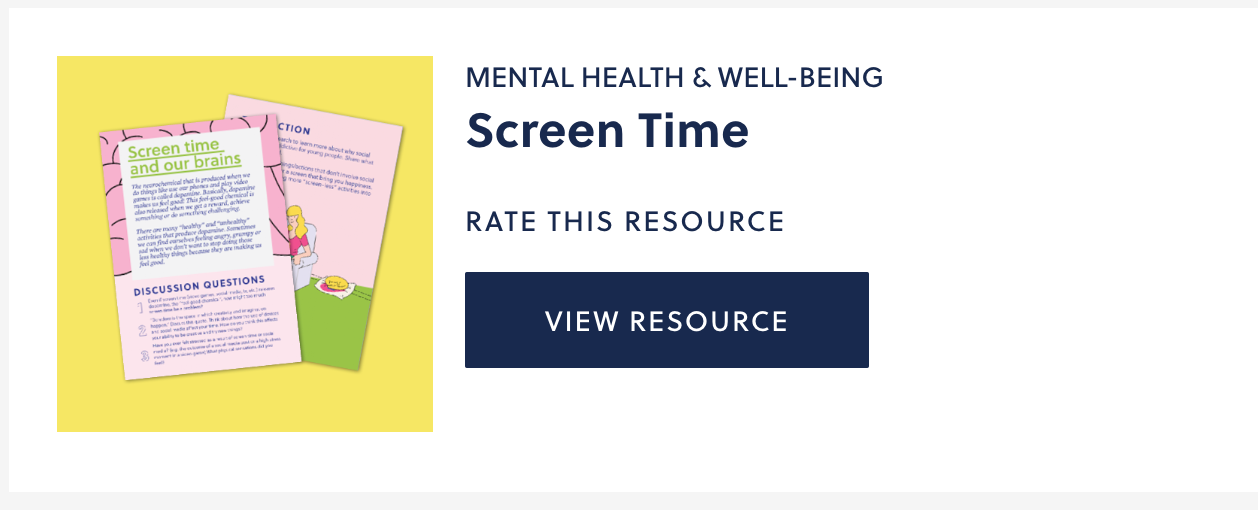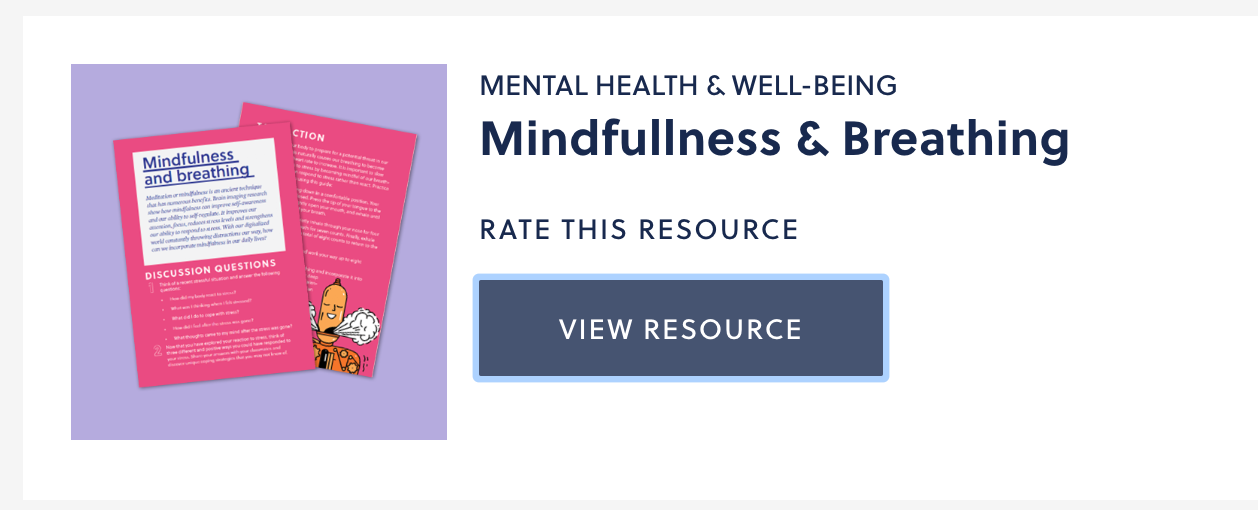WE Virtual Learning Center is a vast resource library filled with engaging and valuable opportunities for all classrooms. Immediately, I was drawn to their WE Well-Being page and looked deeper into their offerings. Well-being has become a highly discussed topic in all spheres including work life, personal life, and importantly, education. Ever since the pandemic, well-being has become a focus of many in education. Teacher and student burnout, mental health, and stress reduction have been popular themes throughout social media posts ever since the world was hit by the traumatic and disruptive events following the pandemic. After so many drastic changes to student life and employment situations in education, well-being deserved to get ample attention. Luckily, this is a concern that WE have addressed head-on, and they offer a wide array of resources to help educators and students achieve better well-being. As a future educator, I have also shifted my focus to ensure I am taking care of myself and teaching my students appropriate skills to do the same. I will highlight two resources that excite me the most and that I imagine myself using in my classroom one day.

Keeping my middle school social studies teaching goal in mind, I chose to explore the well-being resources made available for grades 7-8. Here I found a download to WE’s Well-being Foundational Module along with Acitivity Cards, and I went right to the Activity Cards because they caught my eye! These cards offered quick activities to cover very meaningful and important content in the classroom. I will go over the two Activity Cards I loved!

Screentime skyrocketed during the Covid pandemic and rates have increased since then. Students are reaching the age to use social media in middle school and it is vital that they learn to use it mindfully and carefully. Endless scrolling, comparing one’s life to others, and engaging in harmful content on social media creates a compound of negative effects on one’s well-being. I do not plan on ignoring the use of social media in my classroom and sweeping these issues under the rug. Rather, I would love to implement this Activity Card in my classroom to bring up this topic with my students.
WE included a brief, but thoughtful overview to introduce the ins and outs of social media in relation to our brain’s dopamine levels to students. Then, WE gave a series of provoking and exploratory discussion questions to engage with. I imagined bringing this Activity Card to use on a Friday with my future students. Then, over the weekend they would examine their relationship with social media and experiment with trying new things. Come the next Monday, I’d have them share with each other all of the fun, productive, and feel-good activities they chose to do instead of mindlessly scrolling over the weekend.

This Activity Card was my absolute favorite. It featured discussion questions to invite students into self-awareness and included a simple and effective breathing technique for them to try. I wish to implement breathing techniques, movement, and inward-looking focused discussion questions in every classroom I find myself in. I believe that well-being and learning go hand and hand. When the mind is crowded, there is little room for inviting new information and creativity inside. Mindfulness, breathing techniques, and stress reduction skills are extremely valuable for students in regard to their well-being and overall academic experience. Life can be challenging and become stressful for all people regardless of their age. By bringing mindfulness discussions into the classroom, students can learn to gauge their stress levels and recognize when they need to do a quick breathing exercise to recenter themselves. The breathing technique WE included in this Activity Card is something students can do at any time and they can keep it in their well-being tool kit throughout the rest of their lives.